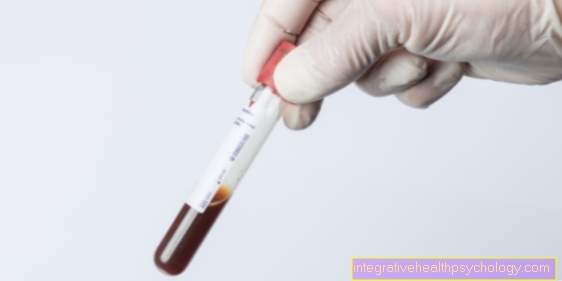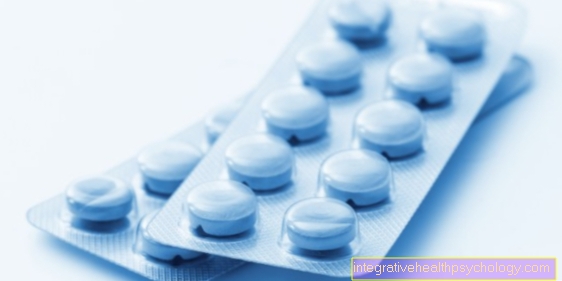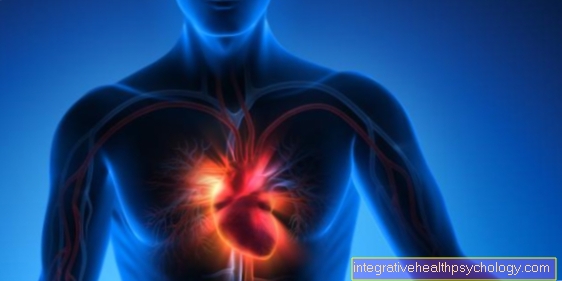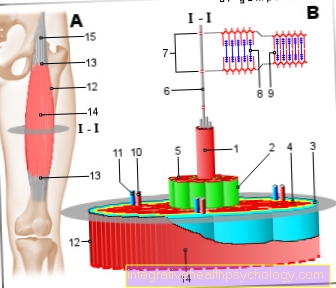Bradykinin
What is bradykinin?
Bradykinin is a hormone, which means that it helps cells communicate with one another. It has a similar effect as histamine. In contrast to steroid hormones such as cortisol, for example, it is made up of strung together amino acids, in this case there are 9 different amino acids. The biological half-life is just 15 seconds. Bradykinin is one of the kinins, which are tissue hormones, so they do not act systemically in the whole body, but locally. Bradykinin plays an important role in the inflammatory process in particular, by widening the nearby arteries and veins so that white blood cells can penetrate the inflamed area to defend themselves against pathogens. Bradykinin also increases the sensation of pain in the inflamed area.

Role, function and effects of bradykinin
The main role of bradykinin is to contribute to the development of inflammation in an injured area. This is necessary to enable rapid healing and to combat any pathogens that may occur as best as possible. In the event of an injury, a special hormone receptor (B2 receptor) is built into the cell walls of nearby blood vessels, to which the bradykinin specifically binds. This bond leads to a relaxation of the vascular muscles and thus to an expansion. This lowers the local blood pressure, but at the same time there is increased blood flow, which is noticeable in reddening and an increased temperature. In addition, the permeability of the vessel wall increases, whereby white blood cells reach the injured area to ward off intruders. It also has a mobility-increasing effect on these blood cells so that they can move better through the connective tissue. In addition, fluid escapes from the vessel into the tissue, causing the swelling of an inflammation. In addition, bradykinin binds to another hormone receptor (B1 receptor), which is formed by injured tissue and locally increases the sensation of pain. For this reason, inflamed areas of the skin are particularly sensitive to pain or even hurt without irritation.
In addition to these easily noticeable effects, bradykinin has several other effects. For example, it causes the bronchi to constrict by stimulating the bronchial muscles. If this is done excessively, a dry cough may occur.
Bradykinin also causes the smooth muscles in the gastrointestinal tract and uterus to contract. Bradykinin causes increased diuresis (urine production) in the kidneys with a loss of sodium. Bradykinin also plays a role in blood coagulation: It is activated by factor XII from the coagulation cascade and contributes to the release of the tissue plasminogen activator, which activates the enzyme plasmin. This ensures that a thrombus is broken down again after its function has been fulfilled.
Due to its vasodilating effect, excreted in sweat, it also plays a role in regulating temperature: a widened vessel releases more heat to the outside world than a narrow one.
Bradykinin also plays a role in allergic reactions, as actually harmless foreign substances are perceived as dangerous. B. cause bronchial constriction or swelling of the skin.
Bradykinin is broken down by various enzymes in the blood.
What is the bradykinin antagonist?
Icatibant has recently become available as a bradykinin antagonist (antagonist) for the treatment of hereditary angioedema. In the event of an acute attack, this artificially produced active ingredient can be injected under the skin using a syringe and leads to an improvement in the symptoms after 1-2 hours. At the molecular level, the antagonist binds to the B2 receptor located in vessels and blocks it, thereby preventing the binding of bradykinin and activation of the receptor. This principle is called competitive inhibition. This prevents vasodilation and an increase in the permeability of the vascular wall and prevents fluid from flowing out. As a result, there is no swelling of the affected area that would otherwise occur.
The same mechanism could make icatibant an effective drug against ascites, which is common in severe liver damage. In this disease, as a result of the decreased liver performance and the associated drop in oncotic pressure in the blood vessels, more water escapes into the abdomen, which Icatibant could possibly prevent.
Icatibant can also be used for some other diseases, especially as an anti-inflammatory in chronic inflammatory diseases or vascular diseases.
What role does bradykinin play in angioedema?
Angioedema is a temporary painless swelling of the skin and subcutaneous fatty tissue. It can appear all over the body and in most cases remains symptom-free. Angioedema in the intestinal area can be problematic as it can cause severe pain and impair digestion. Angioedema in the respiratory tract is particularly dangerous as it can block it. In this case, emergency medical help is sometimes necessary. Angioedema can have very different causes, from allergic reactions to drug intolerance.
For more information, we recommend our website to: Angioedema
A special form of angioedema is hereditary angioedema (HAE), in which there is a congenital deficiency in C1 esterase inhibitors. As a result, the hormone bradykinin can no longer be broken down as well. As a result, the influence of bradykinin increases the outflow of fluid from blood vessels and thus increases the risk of angioedema. Patients with HAE have a 50% chance of developing dangerous angioedema at least once in their life. A bradykinin antagonist is available in the form of a syringe for the treatment of HAE.
Please also read our page: Hereditary angioedema
cough
When taking ACE inhibitors (drugs that are mainly used for high blood pressure), a dry, tickly cough can occur. The reason for this is that the hormone bradykinin is broken down, among other things, by ACE (Angiotensin Converting Enzyme) and is therefore increased in the body when this enzyme is inhibited. Bradykinin causes the smooth muscles of the bronchi to contract and thus narrow the airways, which in some cases can lead to an uncomfortable, dry cough. This may mean that ACE inhibitor therapy has to be discontinued.
Further information on this topic can be found at: cough or Side effects of ACE inhibitors
What does bradykinin have to do with kallikrein?
Many kinins are initially in their (partially) inactive precursor in the blood and must be activated by the enzyme kallikrein in order to be able to develop their effect. An amino acid must first be split off from the bradykininogen (inactive precursor) by kallikrein. It is a serine, which makes kallikrein a serine protease (SERP). This process plays an important role in inflammation and coagulation activation.
Learn more about how the enzyme works Kallikrein.
Further informationPlease also read:
- histamine
- Angioedema
- Hereditary angioedema
- cough


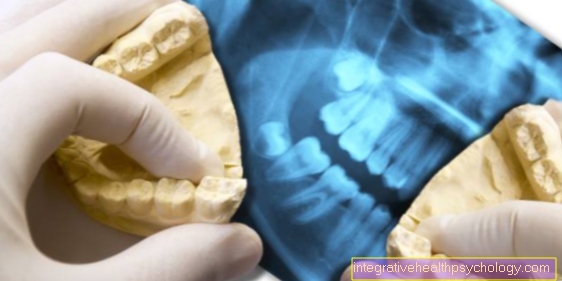




-de-quervain.jpg)
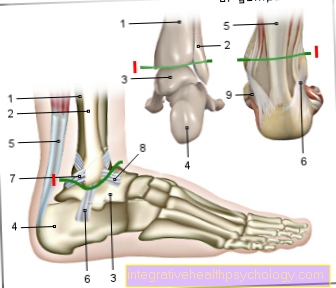



.jpg)




